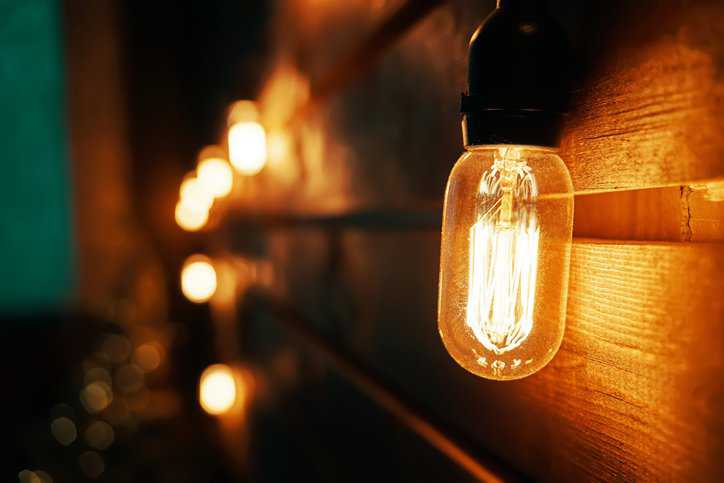ANSI C78.20-2022: Electric Incandescent Lamps

What did Thomas Edison design in 1879 that is still widely used around the world over one century later? The answer is the incandescent light bulb—more accurately an incandescent lamp. The electric light bulb has been called the most important invention since man-made fire because it helped to establish social order after sundown, extend the workday well into the night, and enable safe travel in the dark. The physical and electrical characteristics of incandescent lamps are provided in ANSI C78.20-2022: Electric Lamps – A, G, PS, And Similar Shapes With E26 Medium Screw Bases.
How Do Incandescent Lamps Work?
The incandescent light bulb or lamp is a source of electric light. It contains a wire filament that gets heated by an electric current until light (electromagnetic radiation) is emitted. Incandescent light bulbs usually contain a stem or glass mount attached to the bulb’s base, enabling the electrical contacts to run through the envelope without gas and air leaks. The glass enclosure contains either a vacuum or an inert gas to preserve and protect the filament from evaporating and oxidation. The small wires embedded in the stem or glass mount support the filament or its lead wires. As the electric current passes through the filament, its high resistance causes its temperature to rise until it glows. This effect is known as incandescence and is the guiding principle behind the traditional light bulb. These lamps are made in an extremely wide range of sizes, wattages, and voltages.
What Are the Parts of a Modern Incandescent Light Bulb?
- Glass bulb
- Inert gas
- Tungsten filament
- Contact wire (goes to foot)
- Contact wire (goes to base)
- Support wires
- Glass mount/support
- Base contact wire
- Screw threads
- Insulation
- Electrical foot contact
The ANSI C78.20-2022 Standard for Electric Lamps
ANSI C78.20-2022 specifies the physical and electrical characteristics of incandescent lamps that have A, G, PS, and similar bulb shapes with E26 single and double contact medium screw bases including the reduced wattage versions. These lamps have the same rated wattage and their rated voltages fall within the same voltage range (e.g., 100 to 150 V). ANSI C78.20-2022 does not place any control over lamp designations, but it does note that incandescent lamps are generally designated by wattage, bulb type, and voltage ratings. Since the traditional eighth-inch sizes have long been utilized in some lamp designations, they are used in this American National Standard. The bulb designations used in the standard are defined in ANSI C78.79.
ANSI C78.20-2022 addresses only clear, inside frost, frost-equivalent, and white bulb finishes. Tungsten-halogen and projection lamps are not in the scope of this standard.
Information for Luminaire Design
ANSI C78.20-2022 provides requirements for the following characteristics of luminaire design:
- Burning Position: Misapplications of certain lamps could cause overheating of a luminaire, so certain incandescent lamps are restricted to certain burning positions during operation.
- Base Temperature Rise: Maximum base temperature rise limits are set to ensure compatibility with the lampholder, which may be low temperature with paper or plastic linings or heat resistant with ceramic or porcelain linings.
- Protection: The lamps listed in this standard are intended for indoor use in luminaires of the proper rating.
Where Are Incandescent Lamps Used?
Incandescent lamps are widely used both in household and commercial lighting. Specifically, they are commonly used in desk lamps, table lamps, car headlamps, flashlights hallway lighting, closets, accent lighting, chandelier, and for decorative and advertising lighting.
What Are The Benefits of An Incandescent Lamp?
- Compatible with control devices such as dimmers, timers, and photo sensors.
- Provide good color rendering
- Easily dimmable
- Require no external regulating equipment
- Have low manufacturing costs
- Work well on either alternating or direct current
- Can be used both indoors and outdoors
- Provides nourishing, regenerative infrared light
- Low flicker
- Low or no electromagnetic field radiation (EMF)
ANSI C78.20-2022: Electric Lamps – A, G, PS, And Similar Shapes With E26 Medium Screw Bases is available on the ANSI Webstore.






